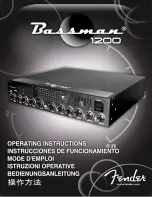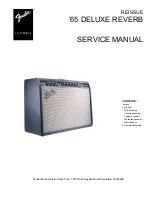
8910ADA-M/ST/SR — Instruction Manual
49
Functional Description
bridging inputs to +24 dBu. Each output uses a separate monolithic ampli-
fier providing very good isolation between outputs.
The 8910ADA-ST DA modules provides a second channel with another set
of gain controls as described above. The stereo module provides four bal-
anced outputs for each channel capable of driving bridging inputs to
+24 dBu.
Analog Circuitry
Because Channel 2 (present on the stereo version) is identical, only
Channel 1 will be described here.
The input amplifier is one of two differential receivers. In the monaural DA,
the second differential receiver is not connected to any other stages since it
is not used on that DA. The input differential receiver has a gain of -12 dB,
which is set by the internal gain resistors and the inverting feedback ampli-
fier.
The output of the input amplifier feeds a resistor network that includes a
front edge gain potentiometer that can be adjusted over a range greater
than ±3 dB. This range allows the gain to span the fixed gain setting steps
(6 dB per step).
The input into the step gain stage is capacitor-coupled so that any offset in
the input stage is not amplified at the output of the DA The gain of the
stepped gain stage is set by selecting taps on an R-2R ladder network. Each
tap provides 6 dB of attenuation of the stepped gain stage output and is fed
back into the inverting input. This has the effect of causing the overall gain
from the non-inverting input to increase by 6 dB.
The output of the stepped gain stage feeds the non-inverting input of one
of the output stage amplifiers. This amplifier sets the output gain while the
second amplifier inverts the first and produces the second differential
output. Each differential output has a dual amp IC to drive the outputs.
This provides high isolation between stages.
All analog audio stages are powered from the filtered ±12 V supplies to
have enough head room to meet the +30 dBu maximum specification for
input levels.










































